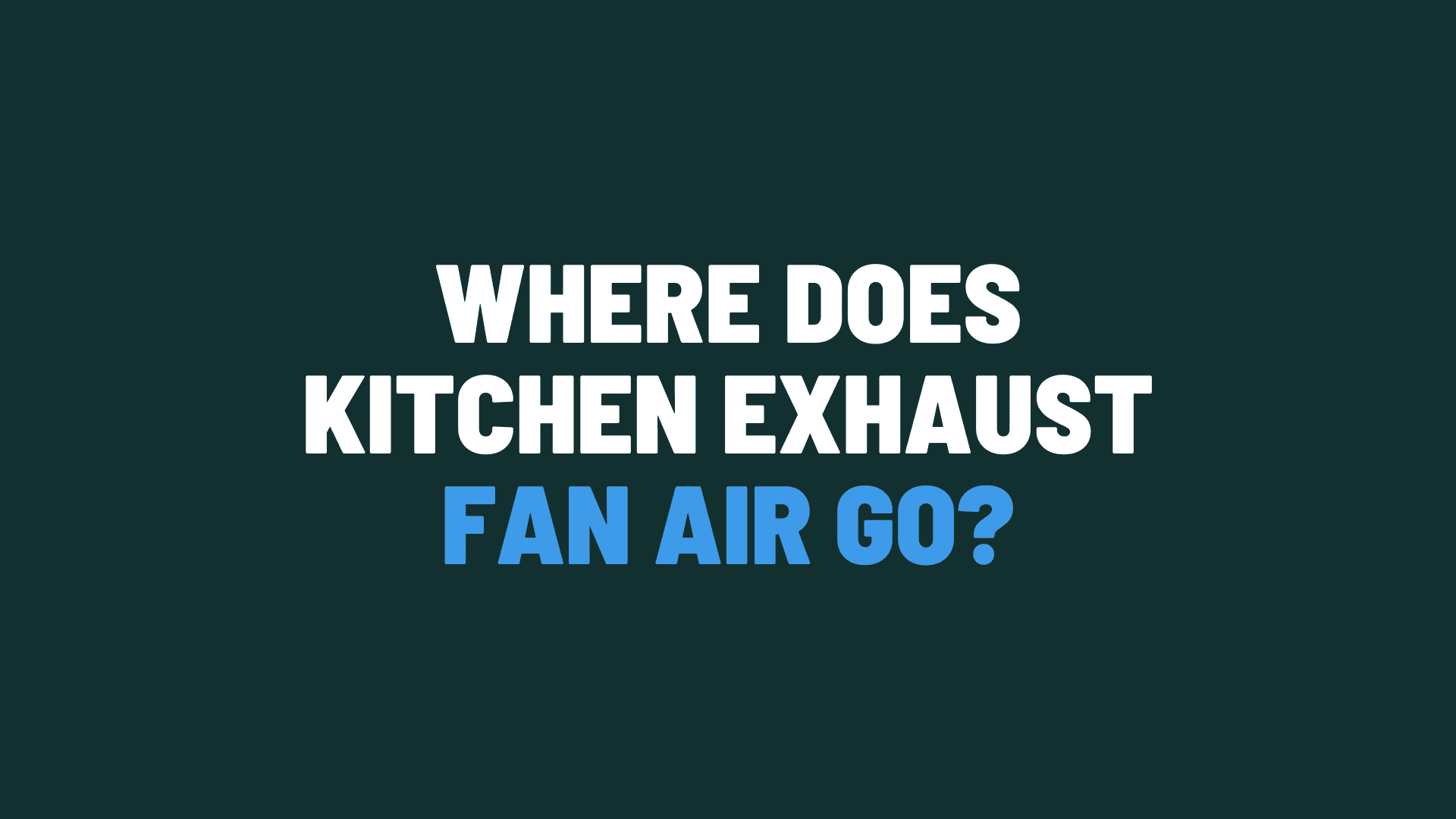
Question: Where Does Kitchen Exhaust Fan Air Go?
Answer: Kitchen exhaust fan air ideally goes outside via ducts. It’s vented through the roof or an exterior wall, removing odors, smoke, and grease.
Understanding Your Kitchen Exhaust Fan
Kitchen exhaust fans remove cooking odors, smoke, and grease. But where does this air go? This article explains the common exhaust fan venting paths and important considerations for your kitchen’s ventilation system. Understanding your exhaust fan’s venting path is crucial for maintaining a healthy and comfortable kitchen environment. Proper ventilation helps remove excess moisture, odors, and airborne contaminants, improving indoor air quality. It also prevents grease buildup, which can lead to fire hazards and damage to your kitchen surfaces.
Common Exhaust Fan Venting Paths
Kitchen exhaust fans expel air through various routes, depending on your home’s design. The most common path is through ductwork that leads directly outside. This ductwork often runs through the attic or walls and terminates with a vent cap on the exterior of your house. Sometimes, the ductwork vents through a soffit or roof. Less ideal, but sometimes encountered, are recirculating fans. These fans filter the air and return it to the kitchen, rather than venting it outside. They are less effective at removing moisture and odors. Finally, some older homes may have improperly installed fans that vent into attics or crawl spaces. This practice creates a significant moisture problem and can lead to mold and structural damage.
Please visit this page to read more about Blue Kitchen Refacing
Related Article: Do Recirculating Hoods Remove Moisture?
Related Article: How Do I Stop Cold Air From Coming Through My Kitchen Fan?
Identifying Your Exhaust Fan’s Vent Location
Locating your exhaust fan’s vent is usually straightforward. First, turn on the fan. Go outside and visually inspect the exterior walls, roof, and soffits. Look for a vent cap or hood where air exits. Sometimes, you can feel the air exiting if you place your hand near the vent. If you can’t find an exterior vent, check your attic or crawl space for ductwork connected to the fan. Be mindful of insulation and exercise caution when moving around in these areas. If you are still unable to locate the vent, contact a qualified HVAC professional for assistance. They have the expertise to identify the vent path and address any potential issues.
Maintaining Your Kitchen Exhaust Fan
Regular maintenance ensures optimal exhaust fan performance. Clean the fan’s filters and grease traps regularly. Most filters are dishwasher-safe or can be soaked in warm, soapy water. Wipe down the fan blades and housing to remove accumulated grease. Inspect the ductwork for any obstructions or leaks. Replace damaged or deteriorated ductwork promptly. Ensure the exterior vent cap is clear of debris and opens freely. Annual professional inspections can identify potential problems and prolong the life of your exhaust system.
Troubleshooting Common Exhaust Fan Issues
Exhaust fans can encounter several common problems. Reduced airflow often indicates clogged filters or blocked ductwork. Clean or replace the filters as needed and remove any obstructions from the ductwork. Unusual noises, like rattling or grinding, can signal loose parts or motor problems. Tighten any loose screws or contact a professional for motor repair or replacement. If the fan doesn’t turn on, check the circuit breaker or fuse. If the electrical supply is fine, the motor may have failed, requiring replacement. For any complex issues, consult a qualified HVAC technician.
Upgrading Your Kitchen Ventilation
Consider upgrading your kitchen ventilation if you experience persistent issues or want improved performance. Upgrading to a higher CFM (cubic feet per minute) rated fan increases air movement and removes contaminants more efficiently. Installing a new, properly sized duct system improves airflow and reduces noise. Adding features like heat sensors or humidity sensors automates fan operation, enhancing convenience and effectiveness. Consult with an HVAC professional to determine the best upgrades for your specific needs and kitchen layout.
Conclusion
Understanding your kitchen exhaust system and maintaining it properly creates a healthier and more comfortable home environment. Addressing issues promptly and considering upgrades when needed ensures optimal performance and long-term benefits. Regular maintenance, troubleshooting, and potential upgrades can significantly enhance your kitchen’s air quality and overall comfort. If you have any questions or need assistance with your kitchen exhaust fan, don’t hesitate to reach out to a qualified HVAC professional. They can provide expert advice and solutions tailored to your specific needs.

Blue Malue Get in touch with Blue here.
